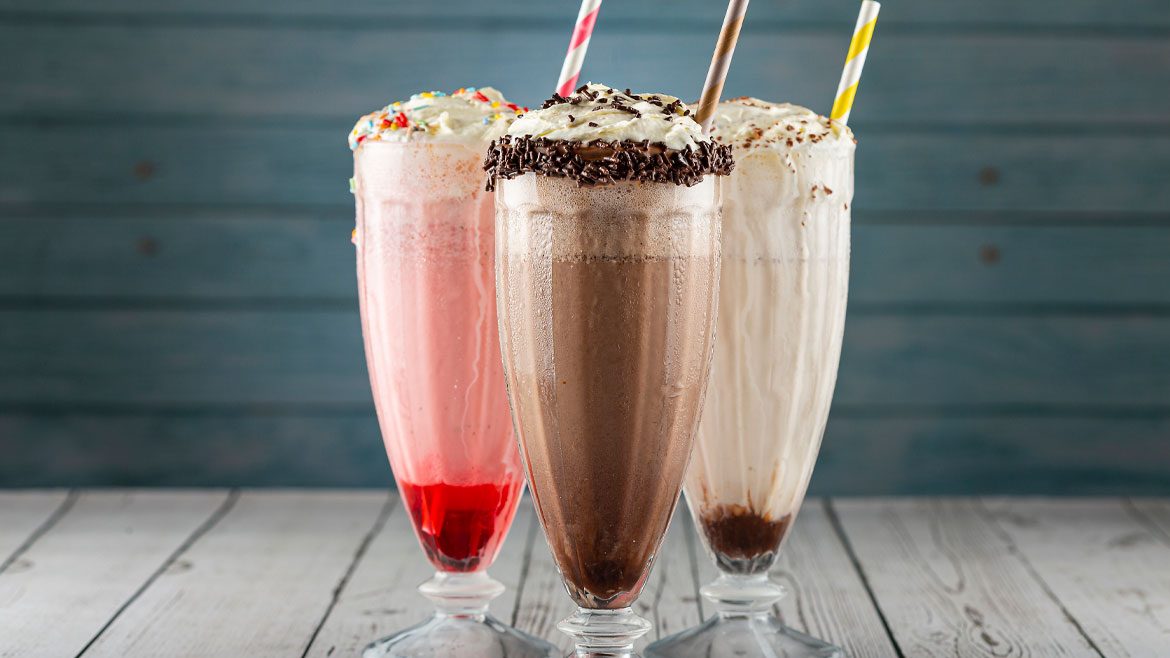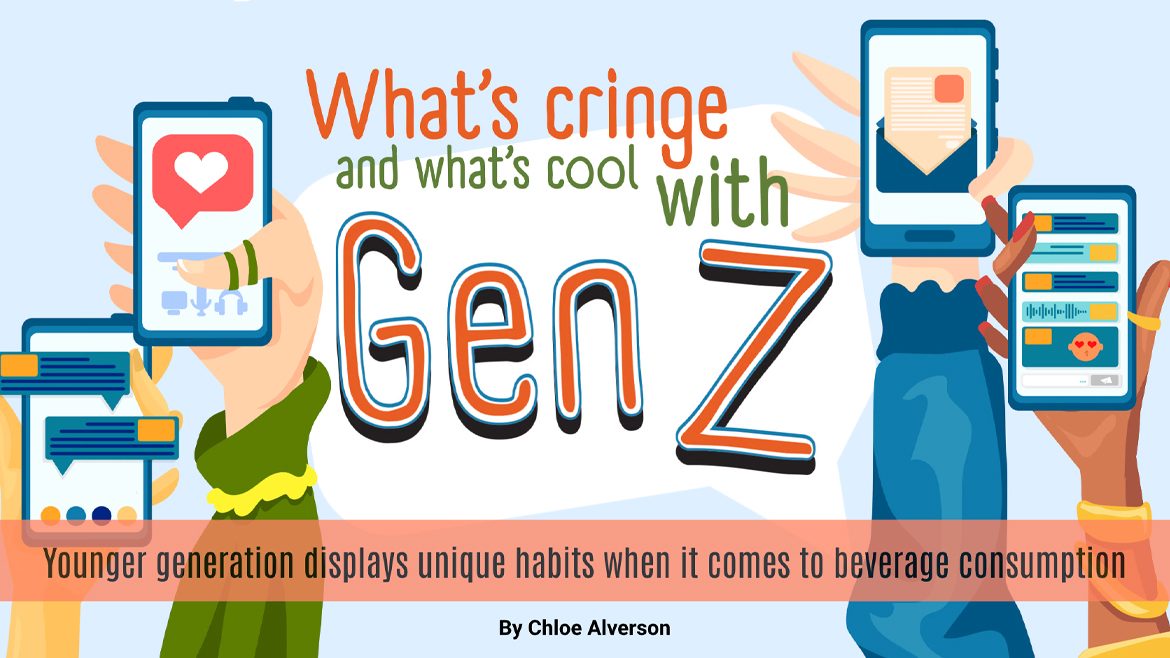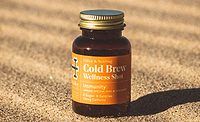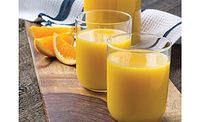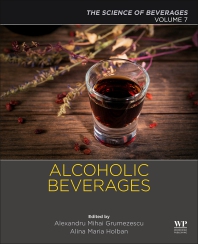Fortified Beverages
Fortified Beverages
By JOANNA COSGROVE
Another echelon of growth is within reach...
provided that claims are backed by solid science
Fortified beverages have
been around for some time, but believe it or not, industry experts say
further growth is attainable if ingredient suppliers, beverage
manufacturers and consumers could all get on the same wavelength. As Steve
Nickolas, president of Scottsdale, Ariz.-based Beverage Science Labs, puts
it, “no one really knows what they want.”
Can that really be true? In this time of harried
consumption, when manufacturers have seemingly penetrated each beverage
segment with fortified options to help healthy-minded consumers guzzle
good-for-you nutrients on the go, how can no one know what they want?
Nickolas explains that while the applications are
innovative, ingredient efficacy and consumer understanding still
haven’t gelled. “As an industry we are not assuming a
leadership role in providing the consumer with a selection of fortified
beverages that have an impact on consumers’ health,” he says.
“Consumers, on the other hand, have no clear concept as to what they
want their beverages to do; the term functional has virtually no meaning
for them.
“For years, all a beverage had to be was thirst
quenching and good tasting, not necessarily healthy,” he says.
“I see many more years of trial and error until the category
matures.”
Paul Dijkstra, executive vice president at InterHealth
Nutraceuticals Inc., Benicia, Calif., believes the fortified beverage
segment is poised for growth; however he argues that true growth potential
can only be realized if beverage manufacturers commit to bridging the chasm
between understanding the benefits of functional ingredients and sourcing
high-quality ingredients that will deliver the benefits consumers crave.
“We are finding that many beverage manufacturers
are knowledgeable about mainstream ingredients like caffeine, but have not
sought out proprietary functional ingredients that have sound science
backing them up and provide regulatory insurance,” he says,
encouraging beverage manufacturers to place more stock in their ingredient
suppliers who have already done their due diligence and can provide
turnkey, efficacious solutions to consumer-relevant problems.
But Dijkstra warns against fortifying beverages simply
for the sake of added label buzz. “New beverage products will need to
differentiate themselves beyond just adding a new flavor or offering
zero-calorie options,” he says. “If consumers are looking to
shed pounds, they not only want zero calories but something to help them
curb their appetite, burn fat and help reduce their body weight. New
beverages that can address this and help consumers manage their weight-loss
goals will continue to gain acceptance by mainstream consumers.”
Fortified waters
The American obesity epidemic is one of the most
predominant trends impacting the beverage segment. Logically speaking,
consumers who are lowering their food intake are almost predisposed to
healthy-drink applications because of their ability to curb hunger without
sabotaging a sound diet.
In addition to desiring portable and convenient
beverage propositions that dovetail with consumers’ consumption
habits, Dijkstra says healthy-minded consumers want beverages that deliver
benefits with a good taste that don’t overtly scream
“diet.”
Of all the fortified beverage categories, water
continues to lead the way in terms of growth. “All other fortified
beverages seem to have a short burst in the market and then flatten out
quickly (teas, dairy-based beverages and fruit-based drinks),”
Nickolas says. “Consumers seem to gravitate toward water, or beverages that are close to what they perceive to be
water (Propel or Vitamin Water) because they already look at water as a
healthy alternative, and will try products that are labeled ‘A Better
Water.’”
“InterHealth consumer research found dieters use
beverages — particularly water and
no/low-calorie beverages — to curb their hunger,” Dijkstra
comments. “We also found there is a long-term potential burnout for
plain water, hence the growing popularity for flavor-enhanced still and
carbonated alternatives — again, fortified with beneficial functional
ingredients.”
One prototype product called Weight Loss Water, from
Orafti North America, Malvern, Pa., contains water, sodium citrate, citric
acid, natural flavor, sucralose and acesulfame potassium, and also is
fortified with Raftiline Inulin to provide the satiety of fiber, caffeine
to boost metabolism and calcium lactate to promote weight loss. The
resulting product is sugar free and contains only 10 calories.
Another fortified water, already at market, is Jana
Skinny Water from Creative Enterprises International Inc., New York. The
no-calorie, flash pasteurized, lemon-flavored water is enhanced with a
combination of ingredients — most notably InterHealth’s
patented Super CitriMax Hydroxycitric Acid — to “help people
lose and maintain their weight.”
New ingredient roundup
Beyond the realm of fortified water, many new
ingredients are poised for use in beverages, especially in the organic and
energy beverage segments. “This trend is reflective of the consumer
desire to maintain and improve energy, reinvigorate and replenish body
fluids, manage weight gain and enhance the nutritional value of popular
beverages,” comments Ram Chaudhari, senior executive vice president,
chief scientific officer at Fortitech, Schenectady, N.Y. “The
high-demand ingredients being used are taurine, caffeine, antioxidants and
lycopene, which fulfill the desire of consumers for added energy and
healthier options.
“Soy, in particular, is still growing in
popularity,” he continues. “In addition, phytonutrients and
sterols are becoming popular additions to many emerging products,
maintaining taste, texture and stability in finished products.”
Chaudhari says the top ingredients poised for growth include fibers, proteins, soy isoflavones, CoQ10,
plant extracts and probiotics. “The challenge for manufacturers is
incorporating these ingredients and other nutrients into beverages, while
avoiding the bad taste, sedimentation and other consequences that often
result from ingredient interaction.”
To meet demand, he says, many beverage-makers are turning to their ingredient suppliers’
technical experts as well as outside sources for ideas and ingredient
combinations. “Even with fast-track product development, companies
are using ingredients that have a scientific foundation to back them
up,” Chaudhari says.
On the probiotic front, Tim Brunton, North American
dairy industry manager for Chr. Hansen, Milwaukee, says there are two
approaches that can be used elevate the awareness and understanding of
probiotics. “The first is to provide non-specific probiotics in a
product to address those consumers who want to consume probiotics but are
not overly savvy with respect to specific strains,” he says.
“The second approach will be to label clinically supported,
trademarked products that the consumer can then recognize and continue to
source.”
On the soy front, Minneapolis-based Acatris’
SoyLife soy germ isoflavone ingredient recently was teamed with the
company’s newest ingredient, LinumLife flaxseed lignan extract to
formulate a powdered phytonutrient beverage mix called Bluebonnet
Nutrition’s Super Earth Phytonutrient Soy Protein Powder. The mix
boasts 15 grams of soy protein and is intended to supplement the health of
both men and women.
Although ADM, Decatur, Ill., continues to work on
dairy and soy protein blends, the company is investing increased efforts in
the fortification of fruit and vegetable juice blends with vitamins and
minerals. “These projects involve our custom blends, including our
highly bio-available calcium citrate and natural-sourced vitamin E,”
says Kathy Schanefelt, the company’s beverage market manager.
“There has been high focus on Fibersol-2 digestive resistant
maltodextrin inclusions in fortified waters and juice beverages as well as
meal replacements and yogurt drinks. The fiber acts as a prebiotic and does
not affect taste or interfere with mineral or calcium absorption and
provides additional functionality.”
Another ingredient of interest, especially in the baby
boomer and women’s segments, is calcium. Harrison, N.Y.-based
Barrington Nutritionals’ water soluble InstaCal provides 11.5 percent
calcium, while its GadoMultiMin allows a formulator to provide calcium,
magnesium and zinc in a clear solution, according to the company’s
Nelson Fretwell, national sales manager, food ingredients division.
Sweetener alternatives
A growing trend in beverage fortification is the drive
to find functional alternatives to caloric sweeteners.
PureLo, from BioVittoria, Southbury, Conn.,
(distributed by Barrington Nutritionals), is a pure water extract of the
sweet Siraitia grosvenorii fruit grown in remote mountain areas of Southern
China. The sweet component, a “triterpene glycoside” called
Mogroside, is non-caloric, highly water soluble, clean tasting and 200 to
300 times as sweet as sucrose.
According to BioVittoria, published research shows the
material suppresses the replication of Epstein-Barr virus and impairs the
growth of cavity-causing oral bacteria. Although the company is undertaking
further research to validate these and other claims, the company believes
the initial place of importance in the western markets will be as a
natural, non-caloric, sweet-tasting powder, a flavor enhancer and a
sweetness potentiator.
Cargill’s Xtend Sucromalt sweetener, a syrup
derived from sucrose and maltose, combines sweetness and slow digestibility
for use in beverage formulations. “Xtend sucromalt offers our
customers the highly desirable benefits of slow digestibility, including
sustained energy release and lower glycemic response,” says Anne
Mollerus, new products project manager for Cargill, Minneapolis. “The
slow and complete digestibility of Xtend sucromalt makes it unique among
other sweeteners. In food and beverages, Xtend sucromalt releases its
carbohydrates into the bloodstream slowly, resulting in a muted blood sugar
response and a ‘slow energy’ release vs. the ‘fast
energy’ release and higher glycemic response of sugar.”
According to Mollerus, slowly digestible sweeteners,
such as Xtend sucromalt, fill a functional gap between full-calorie
sweeteners and reduced-calorie sweeteners, such as polyols. Xtend sucromalt
is GRAS (Generally Recognized As Safe) with no daily intake limit. It is 60
to 70 percent as sweet as sugar.
Palatinose, from Palatinit, Morris Plains, N.J., is
also designed to provide sweetness and prolonged energy in sports drinks.
Palatinose, known under the generic name isomaltulose, is a natural
constituent of honey and sugar cane.
“The question of optimal energy supply is of
increasing importance in research and product design, as this may play a
role not only in health but also in physical and mental performance,”
states Stephan Hausmanns, Palatinit’s business development manager.
Like sucrose, Palatinose is fully digested and thus
has the same caloric value. Unlike sucrose, however, Palatinose is digested
slowly and promotes fat oxidation. This slow digestibility also results in
a low glycemic response and a low isulinemic response, as well as a
prolonged energy supply in the form of glucose.
DSM Food Specialties, based in the Netherlands, offers
PeptoPro, a patented drinkable peptide mixture
treated with proprietary enzymes to cut its protein into di- and
tri-peptides for fast absorption. Water soluble, de-bittered and highly
nutritious, it offers a balanced amino acid profile, according to the
company. PeptoPro provides energy to the muscles, helping reduce fatigue,
promote faster recovery and repair damaged muscle tissue.
PeptoPro recently was selected as the key ingredient
in Club Energise Sport Recovery 20, Ireland’s first protein-based
sport recovery drink developed by Cantrell & Cochrance to help speed
recovery after exercise.
From a traditional beverage perspective, fortification
with functional ingredients can be a win-win situation for beverage
manufacturers and their consumers, providing the science behind the
ingredients appropriately backs up the claim. “It is time as an
industry that we use scientific evidence and clinical studies to better
understand the beverages of the future,” BSI’s Nickolas says.
“Any beverage in the future that is not supported by true scientific
research is destined for failure.” BI
Natural color and preservative ingredients
The heightened consumer penchant for natural and organic beverage
ingredients was no doubt a driver behind Chr. Hansen’s recently
introduced line of natural colors called ColorFruit, which offers various
shades of red. The line offers improved stability with respect to heat,
light and acid conditions.
“By blending a variety of anthocyanins (which are
sourced from fruits and vegetables), we found that we optimized the
molecular relationships between the different pigment sources, resulting in
more vibrant shades and much more stable forms of natural colors than
previously available,” says Tim Brunton, North American dairy
industry manager at Chr. Hansen, Milwaukee. “From the health
standpoint, it is well known that the intake of some anthocyanins, such as
grapes, have been linked to prevention of cardiovascular
diseases.”
The company’s micro-encapsulated
“CapColor” turmeric, has also been shown to have improved
stability in beverages. Additionally, a side benefit is that
turmeric’s main color component is curcumin, which has been reported
to act as an anti-inflammatory agent and help prevent degenerative
diseases.
Oxidation traits such as rancidity, color loss, flavor
changes, off-flavors and decreased shelf life are the result of a chain
reaction of free radicals reacting to form undesirable compounds. Coupled
with appropriate packaging and storage conditions, Chr. Hansen’s
natural FlavorGuard rosemary extract is rich in antioxidants, which slow
the oxidation chain reaction. FlavorGuard is stable in high temperatures
and in the presence of oxygen, and can be added to beverages to retain
quality.
Looking for a reprint of this article?
From high-res PDFs to custom plaques, order your copy today!
